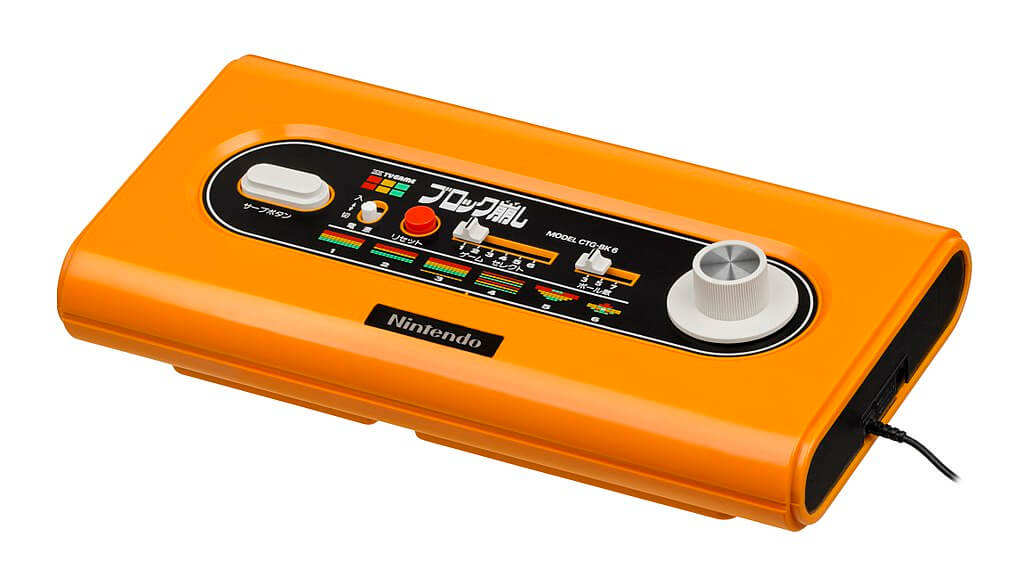Nintendo Color TV-Game Block Kuzushi, also called in the West Color TV-Game Block Breaker, is Nintendo’s fourth console, exclusive to Japan, it was released in 1979. Belonging to the series of retro Color TV-Game consoles, the Block Kuzushi is a first-generation dedicated console based on Atari’s popular game, Breakout.
Being the first console really developed by Nintendo, this “Nintendo Breakout” represents the height of how far first-generation technology could go, the end of an era within Nintendo and the passage to new technologies that would lead it to conquer the world. world of video games.
| COMPANY: | Nintendo |
| CONSOLE GENERATION: | 1ST GENERATION OF CONSOLES |
| RELEASE DATE: | March 8, 1979, Japan |
| GAMES CATALOG: | 6 variants. |
| SOLD UNITS: | 400,000 units |
| LAUNCH PRICE: | 13.500 yen |
| PROCESSOR: | Nintendo/Mitsubishi Electric LSI (no CPU) |
| FORMAT: | Integrated games |
| BUY IT ON EBAY: | https://ebay.us/S7F0Uy |
- History of the Nintendo Color TV-Game Block Kuzushi.
- Price of a Nintendo Color TV-Game Block Kuzushi console. How much?
- Collect the original Nintendo Color TV-Game Block Kuzushi.
- Buy a Nintendo Color TV-Game Block Kuzushi.
- TOP Retro: Best games of the Nintendo Color TV-Game Block Kuzushi.
- FAQ Nintendo Color TV-Game Block Kuzushi.
The Nintendo Color TV Block Kuzushi is the fourth console from Nintendo, which belongs to the series of Color TV-GAME consoles, all of them prior to the Famicom. If you are interested in the history of the first Nintendo retro consoles, I invite you to read the article dedicated to the first two Nintendo consoles before continuing.: The Color TV-Game 6 y Color TV-Game 15, as well as that of the third console, the Color TV-Game Racing 112.
Nintendo Color TV-Game Block Kuzushi, the Nintendo Breakout
The first-generation Color TV-Game family of video game consoles was the start of Nintendo in the domestic market, a series of dedicated machines based on different original genres of video games such as Pong, racing or Breakout, the latter being a clear evolution of Pong.
Their first two consoles had been developed and manufactured by the Japanese company Mitsubishi Electric, with whom they had previously collaborated in the arcade industry with the EVR System. In practice, Mitsubishi managers presented them with a product practically ready to be manufactured by themselves (Mitsubishi), Nintendo limiting itself to adapting it according to its needs, taking care of the rest of the marketing and distribution. Nintendo at that time was a company dedicated to entertainment through its cards, electromagnetic machines and toys, so they had the experience and, most importantly, the contacts in the logistics chain.
In this way, his first console became two identical systems but with different prices: A Color TV-Game 15 that would be considered the original system, and the Color TV Game 6, which was the same limited console to present 6 games with different casing. The theory was that the Color TV Game 6 would be the bait with an unbeatable price, and once in the stores, users would compare and opt for the “more advanced” version… And that was what Nintendo did with its first 2 consoles, impressive and terrifying in equal parts.
Lo importante de lo anteriormente comentado, es que gracias a esta colaboración los ingenieros de Nintendo comenzaron a trabajar con la tecnología LSI, aprendiendo su funcionamiento con el objetivo de diseñar su propio hardware. De esta forma, en su siguiente consola, la Color TV-Game Racing 112 los ingenieros de Nintendo ya fueron una parte activa del diseño y creación del sistema junto a los ingenieros de Mitsubishi. El personal de Nintendo destinado a la división de consolas domésticas estaba muy motivado, al ver que podían portar los éxitos arcade a los hogares nipones, a base de conversiones en sistemas dedicados.
As a curiosity and to contextualize, think that the engineers of the first generation worked with an internal architecture in the consoles completely different from the current one, being the engineers themselves the ones who developed the software through the design of the hardware: The same team or even a single One person did it all, designing both the game and the specific dedicated hardware.
In this way, with previous experience thanks to the close collaboration of Mitsubishi Electric hardware manufacturers, Nintendo engineers designed (now yes) what would be the first console developed by Nintendo, the Color TV-Game Block Kuzushi. The achievement was more than evident, they had learned to design their own hardware/software with first generation technology, they could now design their own system and send it to be manufactured by Mitsubishi Electric (since they continued to use their components and LSI technology of transistor integration at large scale on a chip).
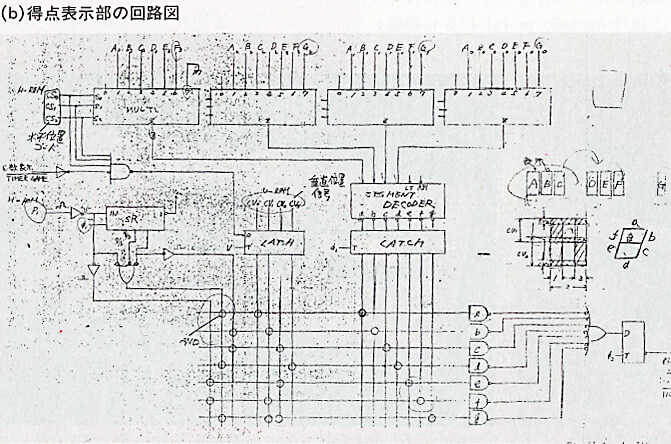
Nintendo’s fourth console and the first developed by the company itself, hence also the first to bear the “Nintendo” brand logo on the console, was nothing more and nothing less than an “inspiration” of Atari’s Breakout , the leading company in those years in both arcade machines and home consoles. Far from being a mere Pong, Nintendo had managed to version one of the most complex video games of the last years of the 70’s on a home console. Quite an achievement.
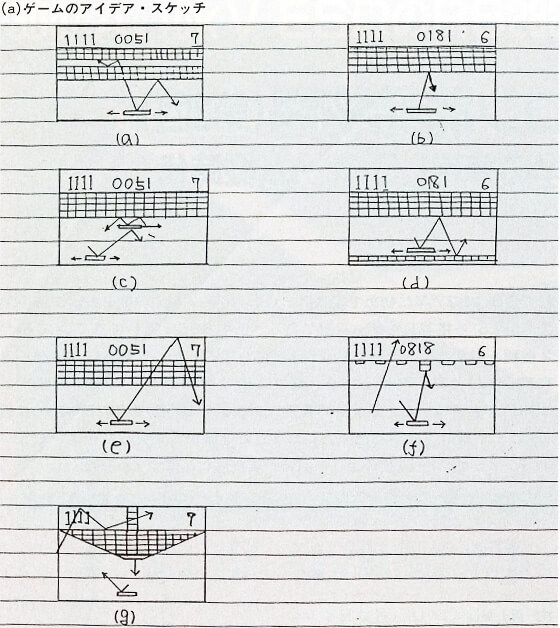
To top it off, the design of the console’s exterior was entrusted to a young industrial design graduate from the Kanazawa College of Art, who had started working at Nintendo in 1977, a certain… Shigeru Miyamoto. So yes collectors, just for this detail we are talking about a system that is pure video game history, before Mario there was the Color TV-Game Block Kuzushi.
¡Retropausa! Some of you may be wondering why it is considered an achievement to launch a Breakout (Arkanoid) style console in 1979, when the arcade was from the year 1976 and Atari itself had already launched the very similar Atari Pinball console in the United States in 1977, as well as the Atari 2600 itself from the second generation of consoles. The answer is simple, much of the 70's Japan was limited to following in the footsteps of the United States in terms of video games and technology in general, we can say that Japan was behind. The United States was the technological center of the world and Japan was limited to importing and licensing North American products and technology. The achievement of Nintendo and many other Japanese companies was to change this role throughout the 70's, evolve their industry and start developing and manufacturing their own technology. Later, as you all know thanks to the Gremlins movie (geeky note), in the early 80's Japan managed to position itself as a reference technological country in the world with its Made in Japan.
On March 8, 1979, Nintendo launched in Japan the first console designed by the Kyoto company, the Color TV-Game Block Kuzushi. The console came with a very interesting playable proposal, with an attractive design and a reasonable price. It was a success? Nintendo sold approximately 400,000 Block Kuzushi consoles, a not insignificant figure but it could have been much better: In 1979 (its launch), the console was already technologically outdated, with second-generation systems such as the Super Vision 8000 in Japan that were far superior . Nintendo was late.
The six games of the Nintendo Color TV-Game Block Kuzushi
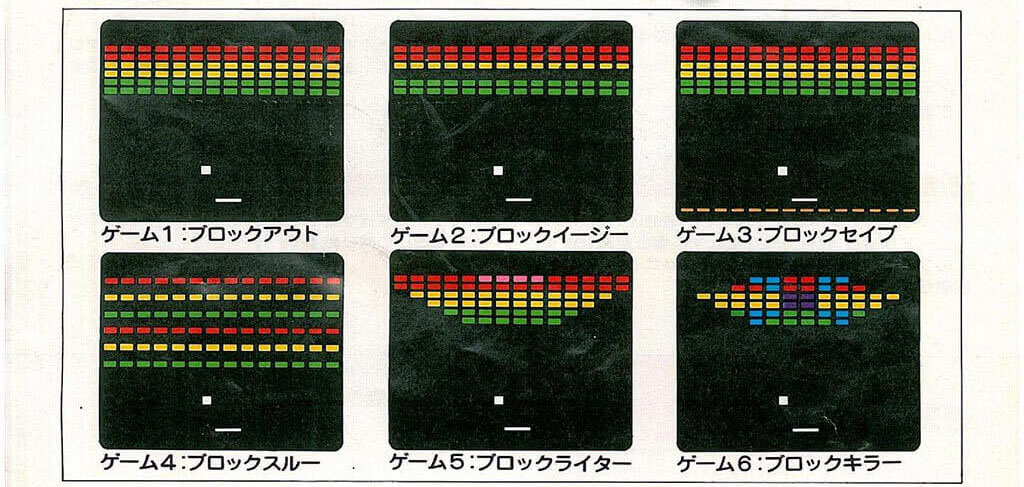
One of the big differences between the Block Kuzushi and the rest of the retro Color TV Game consoles is the quality of its games from our current perspective. Despite being variants of the same genre, as was the case with the previous Pong versions (hockey, racquetball, tennis, Ping Pong…) or the 112 racing variants of the Racing 112, in which the simple fact of playing doubles mode already assumed that you were playing “another game”, the 6 variants of the Block Kuzushi are interesting and entertaining enough to be considered independent games. Quite an evolution if we compare it with most first-generation consoles.
If more than 40 years later we can accept Nintendo’s proposal with this console, imagine the perception that the Japanese would have in 1979… It is true that Block Kusushi broke with the tradition of the time of offering a mode for two players , but its game modes made us quickly forget about this lack, let’s see the different variants:
- Classic game: The way we all know, we serve the ball and we break blocks until they run out.
- Easy game: Having one less line allows the ball to penetrate the hole and destroy many more blocks with fewer rebounds.
- Safe game: You have a lower safety net. The lower blocks last 1 touch and disappear.
- Game by time: You must remove all the blocks in the shortest possible time. The ball starts to bounce only on the walls of the screen.
- Pink blocks game: In this mode we must eliminate the upper blinking pink blocks, breaking the least number of blocks possible, our score depending on how many we leave intact.
- Killer Game: Combination of games 4 and 5 where you have to destroy the blinking blue blocks.
In the classic game modes in which the blocks make the ball bounce, the Block Kuzushi has a particularity that the rest of the video games of the same genre did not follow: When the ball touches the ceiling wall, our bar is reduced by half the size , greatly complicating the last moments of the games. When a life is lost our bar will return to its original size.
As usual in this type of game, depending on where on our bar/racket the ball bounces, it will take one path or another, considerably improving playability and control. The score of our game and previous records are displayed at the top of the screen, so it promotes the pique “rulando mando”.
The controls

Let’s start from left to right:
- A great ball serve button.
- Switch, up on, down off.
- Reset/Reboot.
- Game selection lever beautifully displayed right on the front of the console.
- Ball selector per game (3.5 or 7)
- A great wheel to handle our bar perfectly.
As you can see, Shigeru Miyamoto also did a great job in designing a clear, beautiful, and practical control panel.
The gaming experience, is the Color TV-Game Block Kuzushi currently playable?
Yes it is. It has the usual complications of making a Japanese retro console work today, such as the power adapter and the inputs and outputs of our televisions, but unlike previous retro Color TV-Game consoles, the Nintendo Block Kuzushi does it can be played perfectly today, its proposal and staging continues to work.
As you can imagine, what is mentioned in the previous paragraph is valid for a very specific audience: The console is playable for fans and lovers of retro video games, forget about being the kings of the party with this console, but if you like retro and especially Nintendo, you will appreciate the evolution of this machine compared to the rest of its Pong-type contemporaries.
Really, it is quite a pleasure to be able to say that a console that is more than 40 years old is still playable today. The Breakout formula still allows you to enjoy some good games with a “RetroCao” snack: Bollicao + Cola Cao.
The Nintendo Color TV-Game Block Kuzushi Competition

Despite the Block Kuzushi console being a great advance for Nintendo, as we have mentioned, it was nothing new on the world scene, including the Japanese. At the end of the 70’s, Nintendo had not yet passed the steamroller with its Famicom and there were many companies that were trying to position themselves in a market as profitable as the Japanese, let’s meet some of the most significant competitors of the Nintendo Color TV retro console Game Block Kuzushi in his time:
- Atari 2600, 1977: From October to December 1977, the Japanese company Toyo Bussan began importing the North American Atari 2600 to Japan, a task that the Kawada company would continue. As of October 8, 1979, Epoch would become the official importer of the Atari 2600, changing the name to “Cassette TV Game” (カセットTVゲーム) and selling for 47,300 yen.
- Atari Video Pinball, 1977: Atari managed in 1977 to convert the pinball and breakout machines and arcades to a home console, this being another example of why they were the best of their time. The Atari Video Pinball contained 4 pinball games, 1 basketball game, and 2 versions of his Breakout. It was imported the same year to Japan for 37,500 yen.
- TV Jack 5000, 1978: After launching multiple Pong-style consoles, Bandai jumped into the mainstream with its 19,800 yen TV Jack 5000 system, a console using General Instruments’ GIMINI 8600 technology, an evolution of the AY- 3-XXXX in which, unlike the previous consoles, the cartridge was the one that included the AY-3-XXXX chip, doing all the work and leaving the console as a shell with controls, RF modulator chip, colored and stereo sound. This interesting concept later lost the battle to the ROM cartridge concept.
- Visicom C-100, 1978: Toshiba also joined the party with its second-generation console, the Visicom C-100 for 54,800 yen, a system licensed to RCA, and its RCA Studio II console, which already had ROM cartridges and CPU, being a very interesting system although technologically inferior to the Atari 2600 in performance.
- Super Vision 8000, 1979: Bandai itself abandoned the concept of the TV Jack 5000 a year later and launched its own second-generation ROM cartridge console with 8-bit NEC D780C CPU at 3.58 MHz for 59,800 yen. A very advanced console but at a high price due to its components and development costs by Bandai.
- TV Block, 1979: Epoch’s console was actually an Atari Video Pinball licensed by Atari. It was the most direct competition that the Nintendo console had, launching the same year and for the same price, 13,500 yen. Epoch launched a dedicated console with integrated pinball, basketball and Breakout games and a very attractive aesthetic for the time, as you can see in the image in this section. Beware of the side buttons of the flippers!
These are just some of the most significant examples of the competition of the Nintendo console, to which we could add dozens and dozens of contemporary Pong-type consoles. In practice, the Color TV-Game Block Kuzushi was superior to all previous much cheaper Pong clones and inferior to the new, much more expensive second-generation consoles, so it was left as an intermediate product for those who wanted enjoy a more evolved product than Pong, but they were not yet ready to take the step to the next generation.
Legacy of retro Color TV-Game consoles
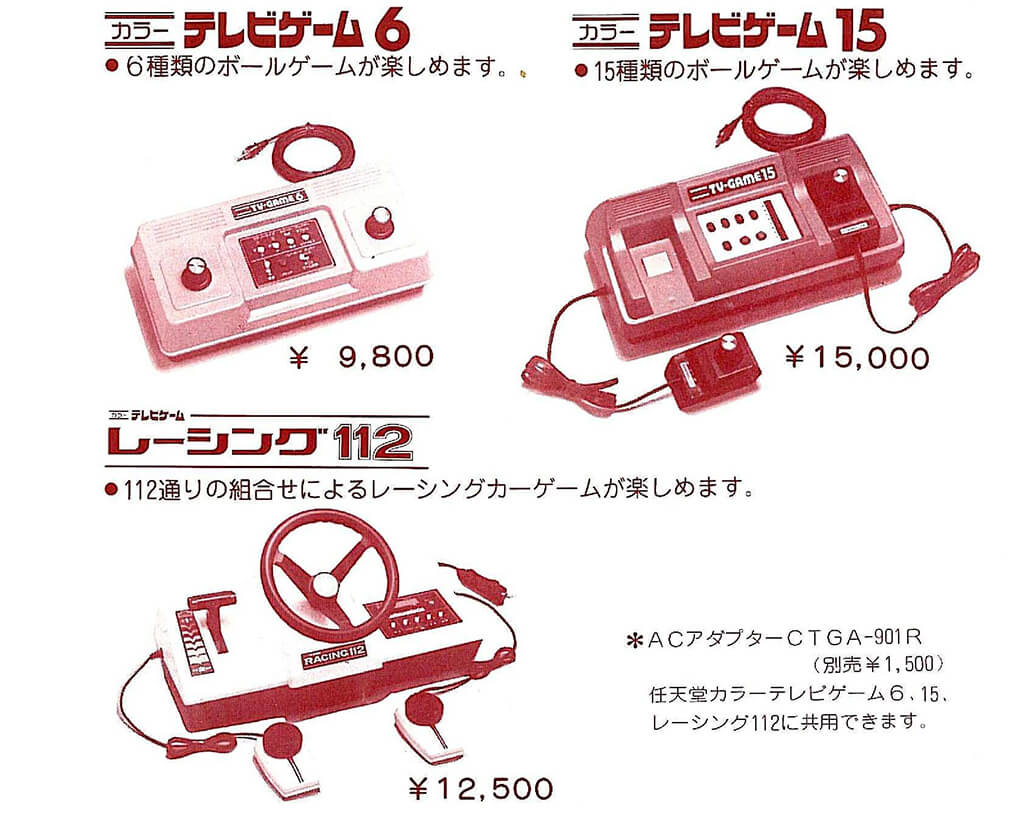
The Color TV-Game Block Kuzushi was the last of the Color TV-Game series of consoles, a machine designed and developed by Nintendo’s own engineers, which represents how far one could go with the technology of the first generation, becoming since its launch the most playable and entertaining console in the Nintendo Color series.
But more than the consoles themselves, the Color TV-Game systems are important for what they meant behind the scenes at Nintendo’s headquarters in Kyoto. Nintendo had diversified its offer with home consoles and had done so with remarkable success, the home video game market was profitable and expanding. Thanks to the Color TV-Game, Nintendo was clear that it had to continue in the domestic market… In this way, the Color TV-Game would become the beginning of one of the most exciting business adventures in the History of Video Games, Without being aware of it, Nintendo had begun to create its own universe of video games.
This is the great legacy of retro Color TV-Game consoles, the consolidation of Nintendo as a digital video game company. Nintendo went from bowling alleys and arcades to our homes, its initiative was rewarded by the Japanese public and, shortly after, Nintendo would return the favor with more creativity and good work, the Game&Watch would soon arrive, a new machine based on its arcade of Othello (Computer TV Game) and a few years later, finally, the Famicom launched in 1983. Without the Block Kuzushi and the rest of Nintendo’s first generation consoles, the Famicom would never have existed as such, hence the importance of the Color TV-Game.
The price of the Nintendo Color TV-Game Block Kuzushi
At Infoconsolas we are always talking about the price of the consoles at their launch, since it is a very important factor for the success or failure of the different video game systems, but we are perfectly aware that it is not easy to understand what 13,500 yen meant more than 40 years in the country of the rising sun. For this reason, as we update the website we offer you a price comparison of different contemporary consoles so that you can know the context
| CONSOLE | LAUNCH | PRICE | BRAND |
| TV Tenis Electrotennis | 1975 | 19.500 yenes | Epoch |
| TV Game System 10 | 1977 | 15.500 yenes | Epoch |
| Color TV Game 6 | 1977 | 9.800 yenes | Nintendo |
| Color TV Game 15 | 1977 | 15.000 yenes | Nintendo |
| TV FUN 601 | 1977 | 9.800 yenes | Tommy Kogyo |
| TV Jack 1000 | 1977 | 9.800 yenes | Bandai |
| TV Jack 3000 | 1977 | 38.000 yenes | Bandai |
| TV Jack 5000 | 1978 | 19.800 yenes | Bandai |
| Fairchild Channel F | 1977 (1976 USA) | 128.000 yenes | Fairchild Semiconductor |
| Visicom C-100 | 1978 | 54.800 yenes | Toshiba |
| Color TV Game Racing 112 | 1978 | 18.000 yenes | Nintendo |
| TV Baseball | 1978 | 18.500 yenes | Epoch |
| TV FUN 901 | 1978 | 18.000 yenes | Tommy Kogyo |
| Color TV Game Block Kuzushi | 1979 | 13.500 yenes | Nintendo |
| Super Vision 8000 | 1979 | 59.800 yenes | Bandai |
| TV Vader | 1980 | 15.000 yenes | Epoch |
| Computer TV Game | 1980 | 48.000 yenes | Nintendo |
| Cassette Vision | 1981 | 13.500 yenes | Epoch |
As you can see, Japan in 1979 already had a large number of different first and second generation consoles, self-created or imported and for modest prices or astronomical figures. What should matter to us is that the offer, unlike today where the big ones predominate, was enormous.
Considering the high competition in an already saturated market, Nintendo opted for a good strategy when launching home consoles at affordable prices, thus achieving good market penetration and increasing brand awareness. Little by little, between arcade machines and home consoles, Nintendo made its way to success.
One note before continuing! If you’ve come this far it means you’re liking Infoconsolas, so don’t forget to visit Infoconsolas’ Twitter where you’ll find a thousand curiosities and a lot, a lot of retro stuff.
If you are interested in knowing how much a Nintendo Color TV-Game Block Kuzushi currently costs, you will find it a little further down in the section “Buy an original Nintendo Color TV-Game Block Kuzushi”.
Collecting the retro console Nintendo Color TV-Game Block Kuzushi
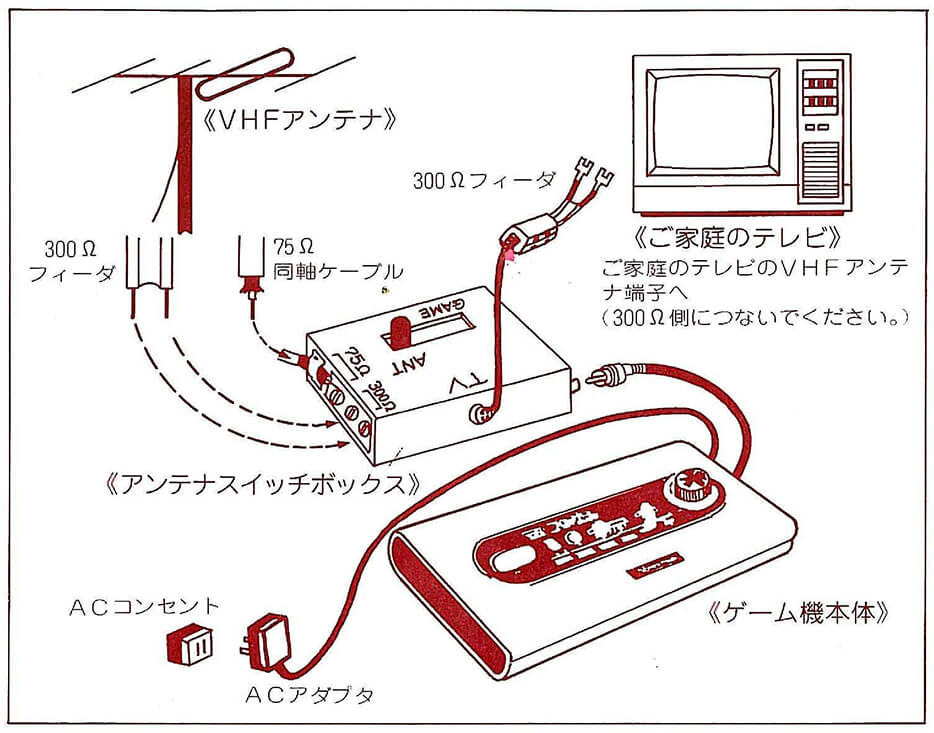
In this section we always ask ourselves if it is worth collecting the Nintendo Color TV-Game Block Kuzushi retro console? On this occasion the answer is easy, yes, of course yes, as long as it is in the spirit of collecting, rather than playing.
The Nintendo Color TV-Game Block Breaker is an iconic Nintendo console and a very important piece in its history, while unknown to most players. Therefore, for those of us who are console collectors, even for those who base their collections solely on nostalgia, the Block Kuzushi is a piece that increases the value of our collection. It’s not just any clone, it’s not another first-generation pong, it’s the first home console properly developed by Nintendo with exterior design by Shigeru Miyamoto himself… What more do you want?
As always, to remind you that the best way to enjoy “hunting” for a new system for your collection is to document yourself, inform you of current prices and be patient… Bargains are no longer seen in the world of collecting, but What we can do is buy at fair and reasonable prices, so setting a maximum price to buy the console and making our own price/state table is a good strategy to review the different sales platforms every few days. Let’s enjoy the road!
Buy an original Nintendo Color TV-Game Block Kuzushi
As we have already mentioned, despite being a console that is still playable more than 40 years after its launch, its main asset is that of collecting retro video game consoles. Fortunately for us, there are few collectors of the first generation of consoles compared to those of other later systems such as 16-bit consoles, so this time it is still possible to buy a Nintendo Color TV-Game Block Kuzushi at a good price.
In the following announcement you will be able to see a selection of original Color TV-Game Block Kuzushi retro consoles for sale right now with their updated prices. Take a look and let’s comment!
Have you seen the prices? At the time of publishing this article, the current prices of the Nintendo Color TV-Game Block Kuzushi range between $100 and $300, depending as always on the state of the console and whether it has a box and manuals or not. If we take into account how old this machine is and what it represents, we will agree that it still maintains an appropriate price for what it is, although like everything related to retro collecting, it goes up in price year after year.
At this point, before buying the console it is important to be clear about what use you are going to give the Nintendo console and what this machine represents for you:
If you are a die-hard Nintendo fan or your console collection is in mint condition, it makes sense to spend a little more money and get a Boxed Color TV-Game Block Kuzushi. In my particular case, I collect retro consoles if possible with their box, but I don’t shy away from loose systems since for me the priority is that they work, in addition to having a part of the history of video games with them. Consequently, in my case I have the loose console being enough for its exhibition, since by itself it is precious (in addition to what I saved).
And now there is the third way, the one that I really find more interesting in first generation consoles, which will normally be in a shelf / cabinet or drawer without anyone touching them for years and years. Admiring them, yes, but not playing with them since they are generally not playable with our current canons. Being aware of this, a very interesting option is to buy “junk” or “not working” consoles, that is, that do not work:
The savings of acquiring a console in these conditions is more than considerable and in practice, we are going to give it exactly the same use (admire them on a shelf). If we are lucky, we will be able to fix the machine since sometimes they are very localized and well-known problems, and if not, we will have a console at a much lower price than the market price. Buying an Xbox 360 that doesn’t work is pointless, but a machine like the Color TV-Game Block Kuzushi is the perfect candidate to, with a little patience, acquire it for very little money by adding the magic words “junk” or “not working ” in our searches. We promise that it will look just as good on your shelf.
STOP COLLECTOR! If you’ve seen the console listing on eBay, I want to say THANK YOU. Since 2004, the objective of Infoconsolas is to contribute to preserving the history of consoles and video games through our own collection of systems and the hours of work invested in this very website.
Being an eBay partner listing, if you buy a game or console, you will be helping Infoconsolas in the preservation of video game culture, so thank you very much again!
TOP: Best Color TV-Game Block Kuzushi console games
Being a console with 6 integrated games, the best option for you to see what its different games were like is to leave you with this advertisement from the time, in which the console is seen in motion inside a humble middle-class Japanese dwelling.
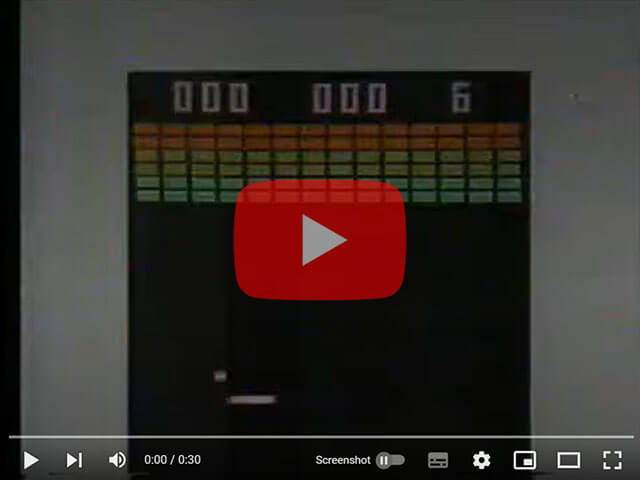
FAQ Nintendo Color TV-Game Block Kuzushi
Here you have the most frequent curiosities, questions and answers of the Nintendo Color TV-Game Block Kuzushi retro consoles, little by little we will expand this section:
On March 8, 1979, Japan.
A rough translation is “block breaker”.
The console model number is CTG-BK6.
It is a first generation retro console.
No, it is exclusive to Japan.
Approximately 400,000 units
You can find a unit without a box from 100 euros and with a box from 150 euros plus shipping costs (Feb. 2022).
Its launch price was 13,500 yen, but it was soon lowered.
Yes, it came out 4 years earlier.
Yes, it was a relatively cheap console for what it offered in the Japanese market.
Those that came integrated, 6 variants.
Integrated games.
No. Only Nintendo manufactured and marketed the console.
No, the 9V CTGA-901R power adapter was needed, which was sold separately.
1.500 yen.
Yes, the entire family of Color TV-Game consoles are compatible with the same power supply, except for the models that only work with batteries.
No, although Breakout itself is an evolution of Pong.
1 player.
Yes, Nintendo proposes to place the console vertically or even upside down.

